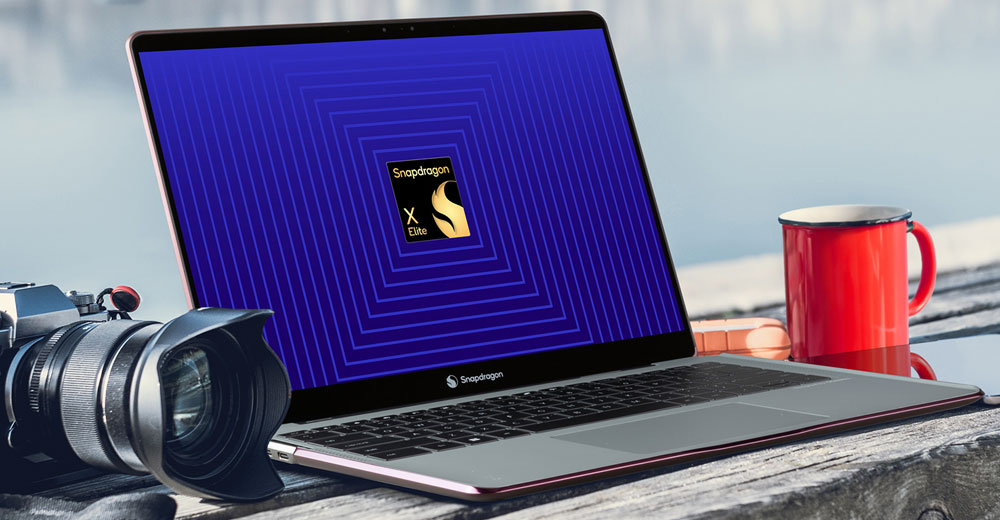A leaked set of performance benchmarks for Qualcomm’s Snapdragon X Elite Arm chip reveals a narrowing of the performance gap with Apple’s top-of-the-line M3 silicon.
The benchmarks published Monday on the Windows Latest website reported the Snapdragon X Elite 1800 had a single-core score of 2574 and a multi-core score of 12,562. By comparison, the M3 has a single-core score of 3181 and a multi-core score of 15,620.
The single-core score represents the performance of a single CPU core when running tasks that don’t benefit from multiple cores. The multi-core score represents the combined performance of all CPU cores when running multi-threaded tasks.
Windows Latest explained that the scores were generated using Geekbench, a cross-platform benchmarking tool that measures the performance of a system’s CPU and GPU, on a prototype device running early preview builds of Windows 11 version 24H2.
It also noted that the 2574/12,562 scores were the highest of five benchmarks generated by Geekbench. The lower scores could be attributable to optimizing the chip’s performance for conditions such as longer battery life or thermal throttling.
While the Apple M3 outperformed the X Elite on the Geekbench tests, Windows Latest added, it is important to understand that the Snapdragon X Elite was tested on a device running Windows 11 unoptimized preview builds, so when running on finalized hardware, it’s likely the performance numbers will be better.
Fighting Chance Against Apple
“Apple’s M series has given Apple the kind of advantage in personal computers that the A series gave it in mobile,” said Anshel Sag, a senior analyst at Moor Insights & Strategy, a technology analyst and advisory firm based in Austin, Texas.
“Qualcomm’s Oryon CPU cores finally give them a fighting chance to deliver competitive performance and battery life,” he told TechNewsWorld. “I believe that this will help OEMs to maintain competition with Apple’s MacBooks and not lose share to Apple.”
The X Elite benchmarks also send a message to PC shoppers. “Arm processors for Windows PCs are not a compromise any longer. They are up there with the best processors,” said Phil Solis, research director for connectivity and smartphone semiconductors at IDC, a global market research company.
“PC Makers will offer more models to test the market,” he told TechNewsWorld. “Consumers will have more choice, although they will need to be educated after a long time of only Intel and AMD Windows PCs.”
The Snapdragon X Elite 1800 has the potential to be a market disrupter, predicted Mark N. Vena, president and principal analyst at SmartTech Research in San Jose, Calif.
“Its touted performance could challenge traditional CPU dominance, spurring innovation and competitive pricing,” he told TechNewsWorld.
“For consumers, this translates into more choice, potentially lower prices, and enhanced performance in laptops and PCs,” he said. “Additionally, increased competition fosters technological advancement, driving the industry forward and empowering users with better computing experiences.”
Benchmark Skepticism
Since the X Elite is still in its pre-production phase, and it’s yet to be determined how it will perform with the latest version of Windows, any benchmarks need to be viewed with a degree of skepticism, Sag cautioned.
There are a number of reasons that benchmarks need to be considered with care, Vena observed. “Benchmarks can be manipulated or optimized to showcase favorable results, raising questions about real-world performance,” he said.
“Compatibility issues with existing software and hardware may affect performance differently in practical usage scenarios,” he added.
“Moreover,” he continued, “reliance on synthetic benchmarks alone may not accurately reflect overall system performance or user experience.”
“Cautious scrutiny is warranted until independent, comprehensive evaluations validate the claims,” he warned. “Having said that, Qualcomm is keenly aware of this, and it’s unlikely they would publish erroneous benchmark results.”
Heart of the AI PC
With Microsoft promoting a new generation of “AI PCs,” the X Elite could become a key component in those computers. IDC defines an AI PC as a PC with an NPU — neural processing unit — capable of 40 TOPS or higher, Solis explained.
TOPS, or Tera Operations Per Second, is a metric used to quantify the computational performance of hardware, particularly in the context of artificial intelligence and machine learning accelerators.
“The AI device trend is centered around being able to run on-device generative AI,” he said. “Regular AI and generative AI could be run on the application processor or GPU, but it’s the larger NPU cluster that defines AI PCs.”
“There are many different definitions of an AI PC, but ultimately, it needs to handle AI tasks quickly and efficiently,” added Sag.
“The Snapdragon X Elite accomplishes that with a dedicated NPU that has 45 TOPS of performance, which enables it to handle all kinds of AI tasks very quickly and efficiently, where other systems with a less powerful NPU may struggle.” By comparison, Apple’s M3 NPU supports 18 TOPS of performance.
Vena explained that the AI PC integrates artificial intelligence capabilities into its hardware and software to enhance performance, efficiency, and user experience. “The X Elite chip plays a pivotal role in this development, acting as the computational powerhouse behind AI-driven tasks such as natural language processing, image recognition, and predictive analytics,” he said.
“By offloading AI computations onto specialized hardware like the X Elite chip,” he continued, “AI PCs can deliver faster responses, improved multitasking, and tailored user experiences. Consequently, the X Elite chip is vital in advancing the AI PC paradigm, pushing boundaries in productivity, creativity, and personalization for users.”
Threat to Apple?
Could a worthy PC competitor to Apple silicon impact its market share?
“A near-M3 PC laptop could pose a considerable threat to Apple’s laptop market share,” Vena said. “With comparable performance and potentially lower prices, consumers may be swayed to opt for the PC alternative, especially if it offers a wider variety of software and customization options.”
“However,” he continued, “Apple’s loyal user base and ecosystem integration could mitigate some of this threat. Ultimately, the impact will depend on factors like pricing, marketing, and consumer preferences in each segment.”
Sag agreed that the X Elite-based computers could pose a threat to Apple’s market share. “Although I expect that most people who were going to buy a MacBook weren’t really considering a Windows PC in most scenarios,” he added. “I think it’s really about preventing the next generation of PC buyers from preferring Macs over PCs.”
Solis, though, doesn’t see the chip posing much of a threat to Apple. “People choose PCs based on the ecosystem first — macOS or Windows OS,” he said.


























































